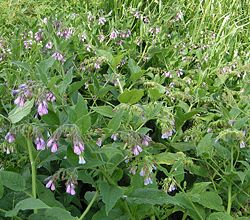Nauru Rich Task Lesson Plan
Contents
Community Helper Herbs - Nature's Natural Healers
Task Description
Students learn to identify, locate, grow and learn to use local plants for their grooming, medication and other uses. They collect information about traditional and modern uses for the plants and share this knowledge with their community
Task Flowchart
- Students brainstorm what is already known about various types of local plants.
- Students invite knowledgeable guest speakers to the school asking them to bring samples of the plants and discuss the uses of the plant.
- Students collect and record information from all available local sources.
- Research techniques for drying and preserving plant specimens. Practice the techniques on any available plentiful plant such as a weed.
- Organise a field trip to accessible habitat to make observation and identify plants previous information. Take knowledgeable adults on the field trip if possible. Where the plant is plentiful, a sample is collected and dried as a type specimen. If not plentiful take a photo or sketch the plant. Collect seed or cuttings if appropriate. Map the local location and distribution of the plants.
- Learn to use the plant in traditional and modern ways preparing it as necessary, including grooming and medication uses.
- Students record information about extinct plants.
- Experiment with growing plants from seed and cuttings.
- Students to choose and produce a suitable product for Expo "Makurin Beo".
- Prepare a class retrieval chart summarising all the available information about the plants studied.
Task End Products
- Teams of students document all available information for one plant. They prepare a folio of this information including photos or sketches to aid identification. Information may include; descriptions, image, preserved specimen, distribution map, changes in distribution, habitat, current status, traditional uses, modern uses or replacement and other interesting information.
- Prepare a one sheet summary brochure suitable for general distribution.
- The class organises and presents a Plant Expo "Makurin Beo" to share knowledge with the community. Display growing plant specimens and tips for growing the plants in the display. If possible have samples products made from the plants available to try.
Nauru Curriculum Footpath
Personal Pathways
Living in a contemporary Nauruan community and preparing for its changes. Taking care of health and self. Learning to work in new ways and creating new opportunities. Working with peers and others.
Communication Pathways
Mastering literacy including the primary language. Mastering numeracy. Communicate knowledge and argument to a diverse audience.
Community Pathways
Fostering identity, belonging and unity. Sustaining culture and identity
Environments and Technologies Pathways
Applying scientific, mathematical and technological understandings. Understanding and sustaining environments.
Suggestions and ideas for students and teachers
- Main techniques for preserving plants are hanging upside down in a dark dry place(4 - 6 weeks) or pressing in absorbent paper under a heavy weight such as a book. Prevent mold attack by keeping hanging plants well ventilated and changing pressing paper regularly.
- Use as much teacher and student knowledge as possible before looking for other sources. This values personal and family knowledge as well as reducing the need to find it elsewhere. Resolve differences in personal knowledge respectfully. It is okay to "agree to disagree" when differences cannot be resolved with certainty. Traditional knowledge is important for its use rather than its precision.
- Students researching common plants will be able to collect speciments and grow plants from seed or cuttings. Students working on uncommon or rare plants should choose a similar common plant to dry and grow to learn techniques that might work with their plant without further endangering it.
- Students may collect information about a range of uses for plants including ointments, creams and oils. THey should become good at one use foe the expo.
- There are many ways to present a folio of information. Students may choose any way that works for the collection of material they have. Completely dry plant samples can be sealed in plastic bags. If not dry they will go mouldy. Spraying with a clear coating like hair spray can help. Others can be attached to a page and covered with contact or plastic attached to the page with sticky tape. specimens need to be kept in good condition until the expo - not forever.
- While focus of task is on medicine and grooming, students can choose any use including food. The retrieval chart should show a wide range of uses for plants as well as their availability so the community can make good choices about using them. It is better for people to grow their own plants than take them from the bush.
- Students prepare a model one sheet (i.e 2 pages) brochure that could be distributed at the expo. There is no need to make multiple copies.
- The teacher may need to assist the class to organise the expo by suggesting things like an organising committee and helping them divide up the jobs for teams to do.
Quality Features
High Quality
- Comprehensive, validated, documented and appropriate blend of traditional and contemporary knowledge about multiple aspects of a plant.
- Faithful application of traditional and contemporary knowledges to growing and using a plant.

